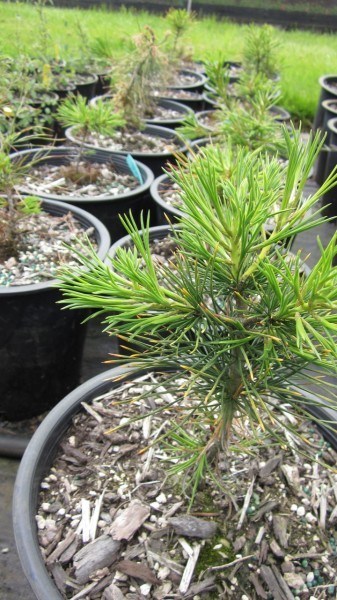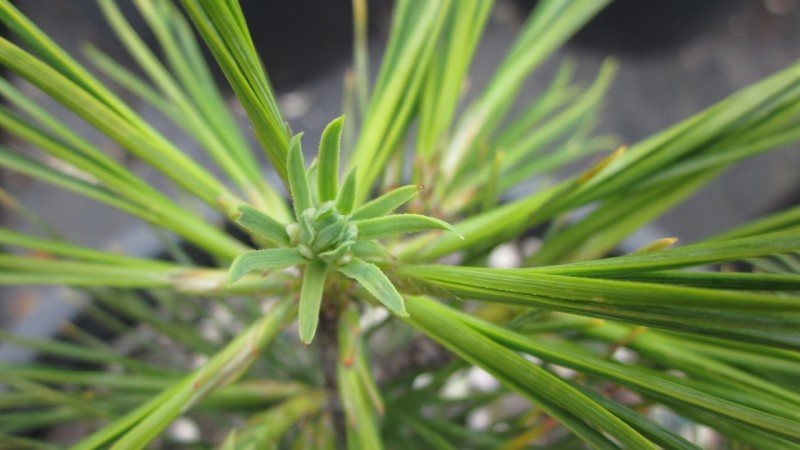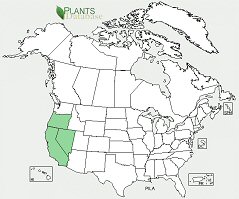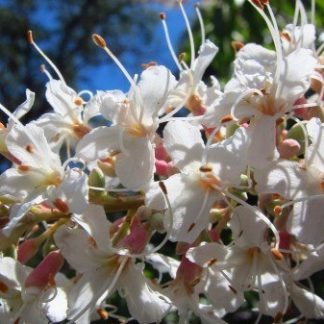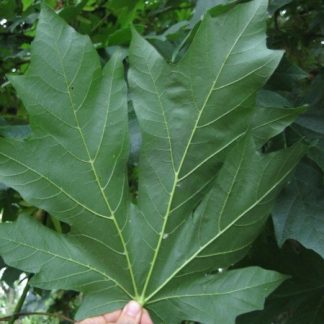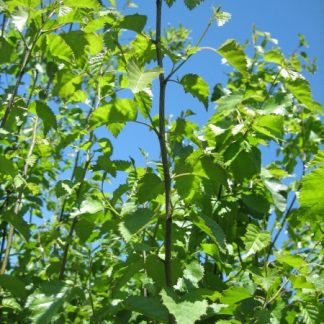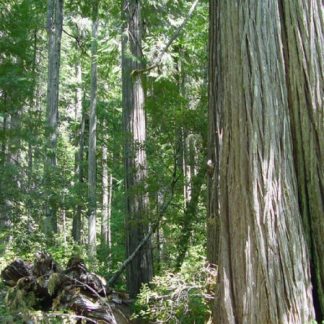Pinus lambertiana
sugar pine
Habit: tall, straight and fast growing pine reaching the great heights of 260 ft (80 m). Young trees have a dense pyramidal shape that becomes more open and flat topped with age. Mature bark is gray to reddish brown with broken scaly ridges and deeply furrowed. The blue-green leaves are needlelike with white lines of stomatal bloom on all needle surfaces; they are 2-4 in (5-10 cm) long and arranged in fascicles of 5. Male cones are small and clustered near the ends of branches while the small female cones are clustered near the tips of branches in the upper part of the crown.
Ecology: found usually occurring in mixed-conifer forest stands but on a variety of sites from moist, steep, north and east facing slopes, to more mesic, south facing slopes at elevations from near sea level in the Coast Range to more than 10,000 ft (3000 m).
Growing Conditions: full sun or light shade in moist soil.
Up until January, 2011 sugar pine was known as the tallest in the genus Pinus, until some ponderosas were discovered in the Siskiyou National Forest in Southern Oregon superseding it’s former record. Birds and mammals use sugar pine as a source of food and shelter.
Specs
Evergreen Coniferous Tree
165-260 ft (50-80m)
3-8 ft (1-2.5 m)
5-10

